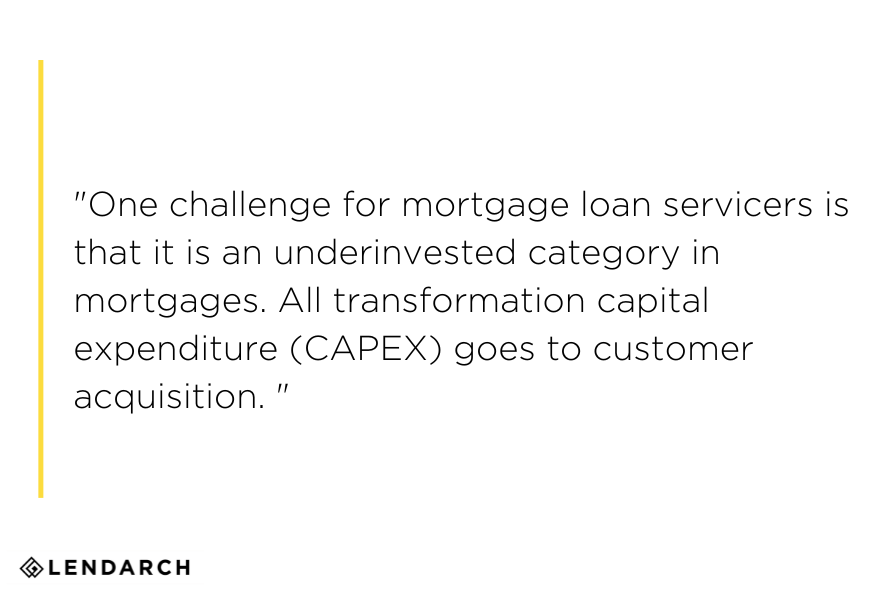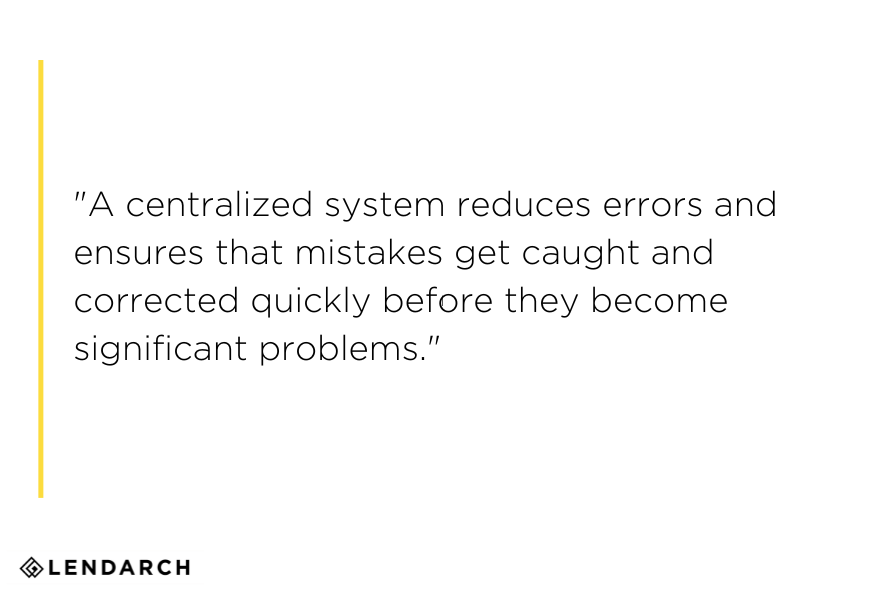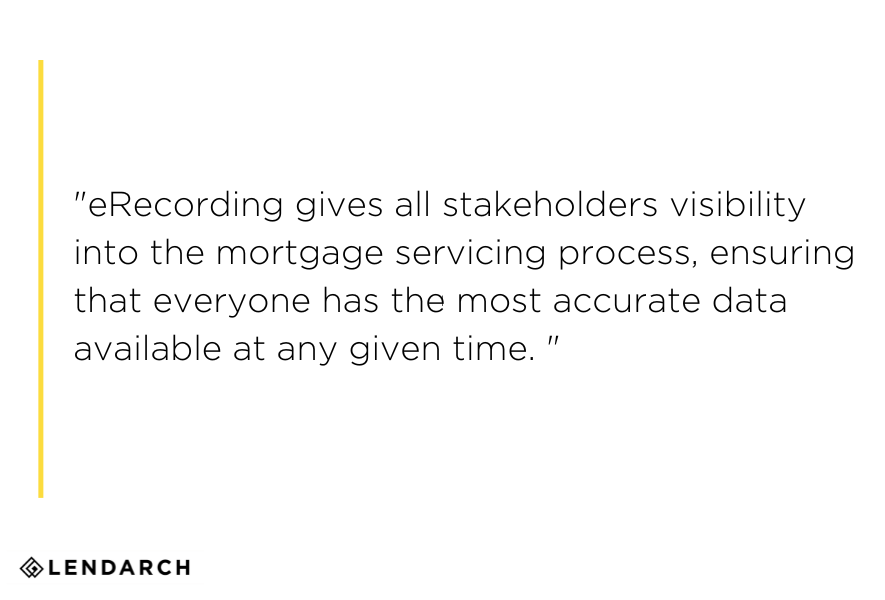People tend to think of a mortgage as solely transactional. While it’s true that a mortgage is a type of transaction between a homeowner and a financial institution, it’s more than just a one-time deal.
Several things can happen in 30 years that require the borrower to reach out to their lender. For example, losing a job, enduring an economic downturn, or going through a personal health crisis can impact the borrower’s ability to repay their loan on time and in full.
This is why mortgage servicers are an essential part of the overall mortgage lending process.
The Importance of Mortgage Loan Servicing
At its most basic level, mortgage loan servicing involves collecting payments from the borrower, including principal, interest, and escrow payments. Mortgage servicers pass the money from the borrower to the appropriate parties to pay taxes, insurance, or investors.

When the borrower is paying their entire loan amount every month, mortgage servicing runs smoothly. The process can be automated with technology that ensures the right people get paid the right amount of money from a borrower’s monthly payment.
Things get more complicated when the borrower doesn’t pay on time, in full, or at all.
A mortgage servicer needs to step in as soon as they identify that a borrower is at risk of missing a payment to get them on track. They might recommend a loan modification (if the borrower qualifies) or a short sale. If the home needs to go into foreclosure, the mortgage servicer will manage the foreclosure process from beginning to end.
One challenge for mortgage loan servicers is that it is an underinvested category in mortgages. All transformation capital expenditure (CAPEX) goes to customer acquisition. There is a minimal investment in the process required to keep mortgage customers once they have signed.

This can lead to a lack of infrastructure that ultimately decreases the quality of customer service. For example, one report from the Consumer Financial Protection Bureau’s Office of Supervision Policy found that the average hold time among mortgage servicers was 10 minutes, and the average call abandonment rate was 30 percent.
How Technology Can Help in the Mortgage Servicing Niche
The need for mortgage servicers has increased dramatically over the last 50 or so years as the mortgage volume has increased across the United States. It will continue to do so in the future, which is why now is the time to find a better way to service mortgages.
The response to the increase in mortgages has primarily been to hire more people to work through the mortgage servicing process manually. Yet, while a human-centered approach can work (and has for several decades), this manual process is not ideal for efficiency or profitability.

Mortgage loan servicers should instead consider implementing technology to make the process more efficient and free up their human workforce to focus on the customer-centric aspects of their positions.
Here are some ways technology can help the mortgage servicing niche.
1. Electronic recording
The archaic method of manually recording transactions takes up a lot of time, money, and resources. eRecording can dramatically speed up turn times while decreasing the likelihood of human error that can cause problems down the road. Plus, eRecording gives all stakeholders visibility into the mortgage servicing process, ensuring that everyone has the most accurate data available at any given time.
2. Integrating servicer and provider systems
Mortgage loan servicers are often third parties who work outside of the mortgage provider’s system. Thus, servicers and providers tend to use different software programs.
This can create bottlenecks as much of the information needs to be rekeyed from one platform to another. If that information is rekeyed incorrectly, then it can also create confusion.

By integrating systems, mortgage loan servicers can improve their efficiency and accuracy, resulting in a better mortgage experience for everyone. A centralized system reduces errors and ensures that mistakes get caught and corrected quickly before they become significant problems.
3. Consolidate one system for eSignatures and eNotarization
The world has gone to a digital-first user experience, so it’s important for mortgage servicers to offer eSignature and eNotarization options. By using a system that has both available, mortgage servicers can easily create a document that includes both of these elements and can be sent to relevant parties with one click.
Meeting Customer’s Expectations for Loan Servicing
For the most part, borrowers don’t intend to interact with their mortgage lender frequently once they have signed on to their loan. However, they may need to reach out to their mortgage lender servicers a few times a year.

It’s crucial, then, to ask, what does the customer want in those 2 – 3 interactions they have with their mortgage servicer a year?
While the answer may vary from one customer to another, there are a few things that all borrowers will expect when they interact with their mortgage lender or servicer.
1. An understanding of the borrower’s history with the lender
There has been a massive churn in banking servicers, so non-baking servicers are now taking over a significant portion of lending. Regardless of whether the borrower is working with a bank or non-bank, they will expect their mortgage servicer to understand their borrowing history thoroughly.
2. A consistent experience
Customers don’t necessarily notice or care if their mortgage servicer changes as long as they have a consistent experience that is catered to them and their borrowing needs. They don’t want to learn a new process every year when they reach out to their mortgage servicer. Instead, they want to get in touch quickly so they can resolve their issue as efficiently as possible.
3. Multiple communication options
Some borrowers want to talk over the phone, while others prefer text or email. That’s why mortgage servicers need to offer different options for communication. Meeting the customer where they are will ensure a streamlined experience that helps customers resolve their issues quickly and effectively.
Stay Competitive in the Mortgage Service Niche with Technology
Mortgage lenders and servicers need to stay competitive in today’s digital market. Using technology can help them provide better service that delivers a superior customer experience.
LendArch can help mortgage service providers discover the best tech tools for their niche. Contact the LendArch experts to learn more about all the digital technologies available that can help your mortgage service business help your customers and grow your business.
As Chief Executive Officer, Tammy Richards brings over 35 years experience in Mortgage Banking, EClose/EMortgage, Robotics/AI/OCR/ICR implementation and more. She has been an executive and has led Nationally at Bank of America, Caliber Home Loans and most recently served as Chief Operating Officer for Loan Depot. She is passionate about and is an expert in the mortgage industry's ongoing tech transformation.











